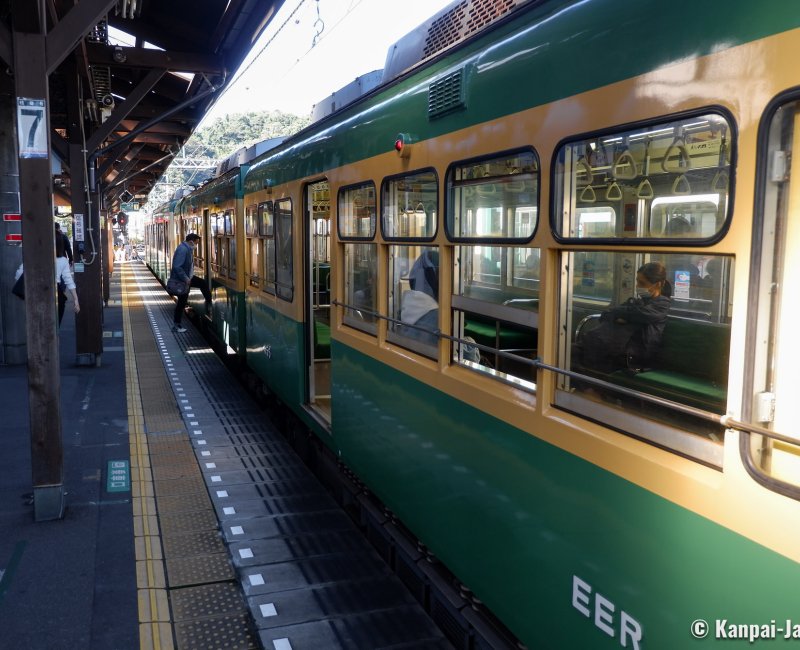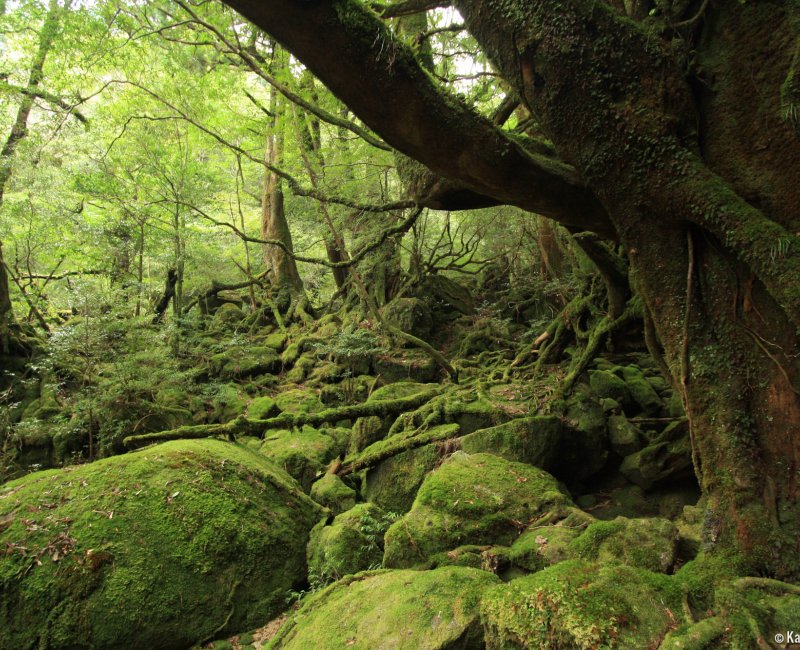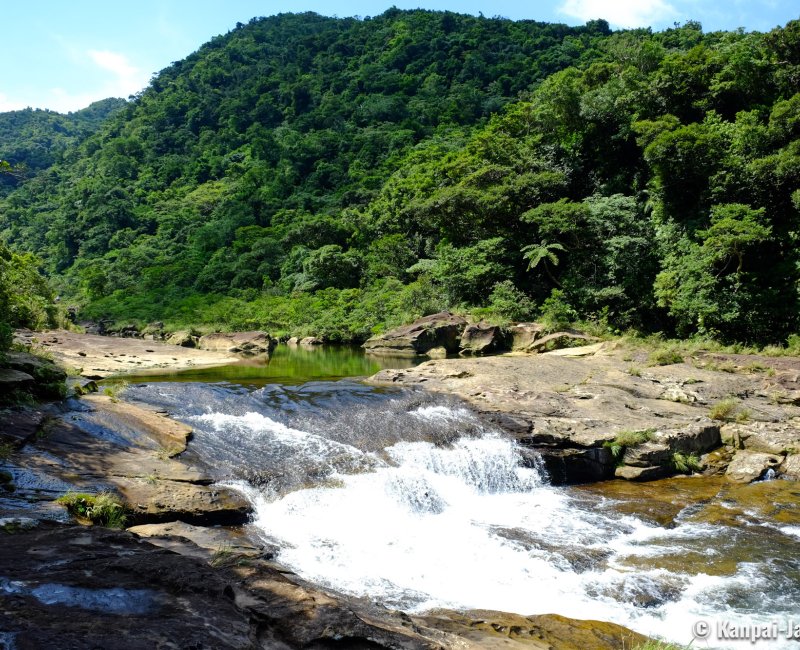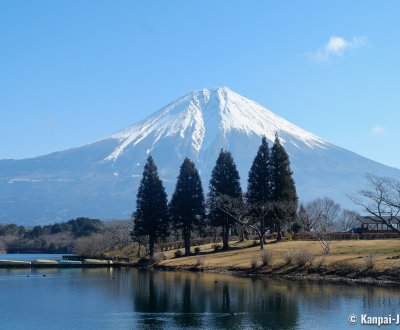Sustainable Travel in Japan
Eco-friendly Tourism in the Japanese Archipelago
As a new international trend for coping with the current challenges posed by climate changes, sustainable tourism also questions travels to Japan. Located in East-Asia, the Japanese archipelago is a very distant destination for Western tourists, several thousands kilometers away that can mostly only be covered by long-haul flights. Therefore, every air travel generates its carbon footprint on the environment.
Depending on the airlines and flight ✈️ comparators that provide the CO2 equivalent-emission per flight during their booking process (or CO₂e, the IPCC’s official indicator to measure and compare greenhouse gas emissions): a Los Angeles-Tokyo flight generates on average 3,2 metric tons of CO₂e. An economy seat in a direct flight is the option with the lowest carbon footprint: about 1,8 CO₂e metric ton per trip.
By comparison, the average carbon footprint per person in the US is between 13 and 16 metric tons CO₂e depending on the sources.
This article introduces a few ideas to try compensate the pollution of this unavoidable part of a trip, but also solutions to travel differently in the Japanese archipelago, based on more ethical and nature-friendly ways of doing things.

How to compensate a flight’s carbon footprint
When planning a travel in Japan, several steps can be taken to compensate the flight’s carbon footprint.
Ideally, one should travel less frequently, but stay as longer as possible, something that usually makes sense when traveling to Japan from Europe or the United States: while the flight’s carbon footprint is high, the ticket is also usually expensive, the travel itself can be long even on direct flights (between 11 to 13 hours), and the time difference at the destination can be taxing. It is therefore recommended to stretch your stay duration to at least 15 or 20 days in order to take full advantage of this "long vacation" destination type. Most countries in the world have visa waiver agreements with Japan, allowing their citizens to visit the archipelago up to 90 days without a visa requirement.
Traveling the archipelago by train
Once in Japan, visitors benefit from a very good public transportation network and train 🚅 is the transportation mean to favor for an eco-friendly trip:
- Subways and suburban trains conveniently crisscross larger cities (like Tokyo);
- The Japanese bullet train Shinkansen make inter-regional travels faster; and,
- In general, domestic flights should be avoided to connect local destinations.
Travels are made easier thanks to several types of transportation pass, such as the Japan Rail Pass, only for international tourists, or the popular prepaid IC card (Suica ou Icoca). The only place in Japan that does not have a rail network is the subtropical archipelago Okinawa, which is only accessible by airway or by boat.
Buses also make a good public transport and it is used on a daily basis by the Japanese. Rental cars 🚙 are convenient to travel outside cities, in the Japanese countryside or when traveling in a small group or as a family for example. Most of vehicles run on ordinary fuel (such as ethanol-blended fuel), and the use of diesel fuel is banned in the capital. All-electric vehicles are not common in Japan, as national automakers, such as Toyota and Honda, have focused on hybrid cars, hydrogen engines, and even ammonia engines as of late.
When looking for a more environmental friendly transport, bicycle rental (especially of an electric bicycle) is a good solution to visit a specific area or a small provincial town. Cycling itineraries aimed at tourism, such as the Shimanami Kaido, are plenty in Japan and allow for example to explore several islands of the Seto Inland Sea: Awaji-shima, Teshima, etc.

Is Japan an eco-friendly country?
An industrialized country and a member of the G7, Japan has been participating to the United Nations Framework Convention on Climate Change since its early days. The country hosted the COP3 which resulted in the adoption of the Kyoto Protocol in December 1997. Then, at 2015’s COP21, the Japanese government committed to the Paris Agreements on climate change to durably decrease its greenhouse gas emissions.
On a day-to-day basis, Japanese people appreciate the changing of the seasons and the ephemeral beauty of flowers whose blooming is itemized in the old koyomi calendar. As a matter of fact, the megalopolis of Tokyo managed to not be totally covered in concrete and several green havens have been preserved to help its inhabitants keeping a connection with nature.
Furthermore, recently inaugurated shopping centers, such as Azabudai Hills and Tokyu Plaza Harajuku, have been designed to display a green consciousness, with the addition of suspended gardens to ornate facades and roof-tops. Likewise, hotels in Japan are trying to reduce waste production, by implementing measures, such as:
- The use of large bottles for shampoo, shower gel and soap (instead of single-use items);
- Toiletries samples made available only at the hotel’s reception if needed and not systematically placed in the rooms anymore; and,
- Not replacing towels and tidying up every day for clients who stay more than one night (a measure reinforced during the Covid Pandemic due to staff shortage).
In the country, other new hotels opened with a whole eco-responsible approach, such as the Good Nature Hotel Kyoto, or Shikoku Island’s Itomachi Hotel in Ehime prefecture, designed by architect Kengo Kuma that boasts being the 1rst zero-waste hotel in Japan 🏨. In the deserted rural areas, several projects tuned-up old unused buildings, such as schools, into hotels to attract new visitors.

However, these green practices still belong to a contemporary industrialized society, ruled by capitalism and a never ending thirst for brand new products advertised to create a need, like:
- Merchandising and products derived from official popular licenses;
- Limited or seasonal editions; and,
- Promotional goods (tissue paper, fans) handed for free at the exit of train stations.
Plastic consumption in Japan
Immediately noticeable is also Japan’s heavy consumption of plastic, especially for food packaging:
- Each ingredient is indeed protected by one or several layers of plastic wrapping, as a mean to preserve their freshness.
- The jidohanbaiki or drinks vending machines, so convenient in the daily life, unfortunately create a large volume of PET plastic bottles, that are usually thrown away after only 1 use. On average in 2023, every person living in Japan uses 183 PET bottles per year, that is to say 1 every 2 days.
The public is aware of this dependence to plastic and measures to recycle plastic waste, such as waste sorting, are widely put in place in Japan and while there are rules variations depending on the regions, the locals implement them quite strictly and thoroughly. Generally speaking, trash should be sorted at home as there are very few trash bins in public places, beside the surroundings of konbini or drinks vending machines.
Waste processing plants are also being developed, with the involvement of large international groups such as Veolia, for example, that established in Japan several years ago for wastewater management and plastic resin recycling.

Recently, the use of fabric bags (tote-bag or eco-bag in Japan) for grocery shopping has been spreading, and come as a replacement of plastic bags, that are still available but for a fee. However, you’ll still find plastic bags for "wet umbrellas" freely available at the entrance of shops on a rainy ☔️ day.
Air conditioning
A big pet peeve on an ecological perspective, that any traveler in Japan will encounter, is the systematic use of air conditioning. Air con is first and foremost used to compensate the very hard summer weather, which is both very hot and humid. Most accommodations, restaurants, shops and public transports therefore are equipped with a reversible air conditioning, that also allows heating in winter.
We recommend reducing the energy consumption and avoiding the overuse of AC whenever possible in your accommodation. Since the shutdown of most nuclear power plants following 2011 Fukushima’s accident, the Japanese government has been massively importing fossil fuel to produce its electricity, which is not environment friendly and is quite expensive, especially in a post-Covid 🦠 inflation context.
When considering traditional Japanese culture, one can take notice of its specific ecological awareness with a collective mind influenced by Zen Buddhism since the 12-13th centuries. Being content with little to reach Enlightenment, living with the bare minimum to nurture one’s soul and respecting the nature without trying to dominate it are Buddhist teachings that are close to today’s idea of energy sobriety. Therefore, discovering the temples’ ascetic culture is a good way for a sustainable travel in Japan.
Eco-friendly destinations and good practices
Several ecolabels exist to identify touristic destinations offering a sustainable and ethical tourism. For Japan, one can follow the recommendations of:
- The JSTS-D (Japan Sustainable Tourism Standard for Destinations), a label created in 2020 by the Japanese Tourism Agency (JTA) based on the international critera of the Global Sustainable Tourism Council (GSTC); and,
- The organism Green Destinations that lists its top 100 of the most Eco-friendly touristic destinations each year.
To summarize, eco-friendly destinations in Japan are usually located outside the big cities (except for Kyoto that was awarded the Green Destinations certification in 2021 and the JSTS-D label), in rural areas that already have preserved national parks or in villages or smaller communities that have already launched green initiatives. Kanpai has already visited some of them:
- Miura Peninsula;
- Shirakawa-go;
- Miyama;
- Shodoshima;
- Aso City;
- Hakone;
- Shikoku Island;
- Akita Prefecture;
- Atami; and,
- Sumida-ku ward in Tokyo.
Chichibu small mountain town in Saitama and Kamaishi on the Sanriku Coast are also worth mentioning.
Staying at a temple (shukubo) or at a guest-house, enjoying local and seasonal food, buying a second-hand kimono 👘, visiting a farm, taking the time to travel and staying several days at the same place (slow tourism), going on sport excursions or excursions in nature such as forest hiking (pilgrimage trails, shinrin-yoku forest bathing, camping) are all activities suitable to an environment friendly travel.
Lastly, here is a short list of good practices before and during a stay in Japan:
- Use a refillable cup or bottle so as to limit the use of single-use bottles of drinks vending machines;
- Bring reusable cutlery to avoid using the disposable ones offered at supermarkets and konbini;
- Carry a small hand towel to wipe hands at the restaurant and avoid using the plastic-wrapped wet wipes;
- Bring a fabric bag to carry grocery shopping and avoid buying plastic bags;
- Use soap bar instead of shower gel for personal toiletries;
- Travel light and limit the number of suitcases per person;
- Whenever possible choose souvenirs that are made in Japan, and regional craft objects;
- Limit the use of air conditioning at your accommodation by not having a too large temperature difference between outside and inside;
- Avoid over-wrapping whenever possible, and do not accept gift wrapping when offered;
- Bring a hermetic bag to collect your trash when on an excursion and sort your trash once at your accommodation;
- Choose the eSIM (QR Code) instead of the Pocket Wi-Fi for internet access in Japan.
Sustainable travel in Japan is all about individual behavior, like not producing trash, and we encourage trying to aim at an eco-responsible consumption, without forgetting to indulge and treat oneself.


